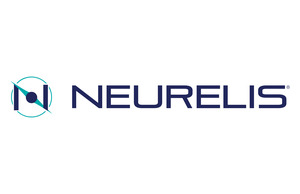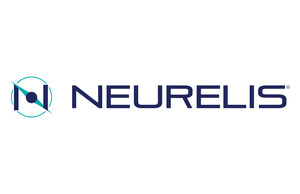- Investigational Phase 3 study of VALTOCO® (diazepam nasal spray) CIV shows double the time between seizure clusters when administered over a 12-month period
- Poster addresses myths associated with rescue therapy for seizure clusters
- Additional poster highlights investigational non-surgical treatment option for cerebral cavernous malformations
SAN DIEGO, Dec. 2, 2022 /PRNewswire/ -- Neurelis, Inc., announced the company will present nine posters at the 76th American Epilepsy Society Annual Meeting (AES), December 2 – 6, 2022, Nashville, TN. Poster presentations will occur on Monday, December 5, 2022, 12:00 – 1:45 PM CT.
"The SEIVAL, Lennox-Gastaut Syndrome (LGS) and Rett syndrome data supporting the utility of VALTOCO emphasize the need to advance a reliable treatment for seizure clusters," said Adrian L. Rabinowicz, M.D., Neurelis SVP Clinical Development and Medical Affairs. "The expanding body of data provides us with greater insights into how we can improve overall patient care and redefine best clinical practice so people with epilepsy and their families can experience some relief from the fear of seizures."
"It is important for people with epilepsy to have a seizure action plan. These analyses are valuable because they help healthcare providers and their patients decide on a plan that is right for them," said Enrique Carrazana, M.D., Neurelis Chief Medical Officer. "In addition, these analyses are critical because they help us advance investigational treatment options that will benefit the epilepsy community."
Neurelis will host a product theater for VALTOCO, "Nasal Spray Therapy for Episodes of Frequent Seizures," Saturday, December 3, 12:45 – 1:45 PM CT. The showcase will feature James W. Wheless, BScPharm, MD, FAAP, FACP, FAAN, FAES, Professor & Chief of Pediatric Neurology at Le Bonheur Children's Hospital in Memphis, TN, and Amit Verma, MD, Associate Professor, Department of Neurology, Houston Methodist Hospital, Houston, TX.
Additionally, Neurelis will host a scientific exhibit and a sponsored symposium. For more information about AES, visit www. aes-2022.org, and to register for the exhibit and symposium, click here.
Presentations Include:
- Scientific exhibit: "Recent advancements in the treatment of seizure clusters," Sunday, December 4, 2:00 – 5:00 PM CT, 207 A/B, Floor 2.
Presenters: Patricia Penovich, MD, Minnesota Epilepsy Group, St. Paul, MN, Jurriaan M. Peters, MD, PhD, Boston Children's Hospital, Boston, MA, and James Wheless, MD, Le Bonheur Children's Hospital, Memphis, TN
- Sponsored symposium: "Intermittent Rescue Therapy for Seizure Clusters: Hypothesis-Generating Observation of Change Across Time in SEIzure InterVAL (Time Between Seizure Clusters)," Monday, December 5, 6:00 – 9:00 PM CT, Davidson Ballroom A, Floor 1M. Presenters: Michael R. Sperling, MD, Thomas Jefferson University, Philadelphia, PA, (Chair), Tracy A. Glauser, MD, Cincinnati Children's Hospital, Cincinnati, OH, Jurriaan M. Peters, MD, PhD, Boston Children's Hospital, Boston, MA, Tracy Dixon-Salazar, PhD, LGS Foundation, New York, NY, Danielle Becker, MD, MS, FAES, Case Western Reserve University, School of Medicine, Cleveland, OH, and John Stern, MD, UCLA Department of Neurology, Los Angeles, CA
Clinical Presentation Highlights Include:
- Three posters explore factors that may be associated with the observed increase in SEIVAL across 12 months. One poster shows that a change in drug or dose of concomitant daily antiseizure drugs during the completed long-term, Phase 3, open-label, repeat-dose safety study did not appear to influence SEIVAL over time. Another poster shows similar increases in SEIVAL in the pediatric and adult subgroups, which are consistent with the overall SEIVAL group. The third demonstrates that the increase in SEIVAL was not associated with a change in Quality of Life in Epilepsy scores, and scores were maintained over time.
- Two posters provide additional results from the Phase 3 safety study of the open-label, repeat-dose safety study of VALTOCO for the treatment of seizure clusters. In an analysis of subgroups of patients with Rett syndrome or Lennox-Gastaut syndrome treated with diazepam nasal spray, initial dose-effectiveness was demonstrated in both groups along with safety profiles concordant with the overall study population. A second analysis found a bimodal distribution of seizure cluster occurrence through the day, with peaks every 12 hours, roughly corresponding to day–night transitions.
- Two posters describe post hoc analyses of data from the Phase 3 safety study. One shows that cannavidoil (CBD) did not appear to alter the overall safety and effectiveness of diazepam nasal spray. A second analysis shows no clear association between effectiveness of second doses of diazepam nasal spray and time of day, representing fed versus fasted states.
- An additional poster reevaluates potential myths associated with the use of rescue therapies for seizure clusters, which may help refocus patient care and ensure best clinical practices.
- A final poster includes data demonstrating that the investigational agent NRL-1049, a selective inhibitor of rho-associated protein kinase 2, may have a role in the prevention or treatment of CCM, which may manifest as seizure. NRL-1049 has shown efficacy in reducing vascular lesion burden in CCM, potentially by stabilizing the vascular endothelium. A clinical development program is currently underway.
Poster Presentation Information:
- SEIzure Cluster InterVAL (SEIVAL) Between Seizure Clusters and Quality of Life Across Time from a Phase 3 Safety Study of Diazepam Nasal Spray for Seizure Clusters
- Examination of Interval Between Seizure Clusters Across Time for Pediatric and Adult Patient Subgroups in a Long-Term, Open-Label Safety Study of Diazepam Nasal Spray
- Concomitant Cannabidiol Does Not Impact Safety and Effectiveness of Diazepam Nasal Spray for Seizure Clusters: Post Hoc Analysis of a Phase 3 Safety Study
- Effectiveness of Diazepam Nasal Spray Does Not Vary Across Times of Day Associated with Meals and Fasting in Patients with Seizure Clusters: Post Hoc Results from a Long-Term, Open-Label Safety Study
- Past and Future Perspectives for Seizure Cluster Treatment in Persons with Epilepsy
- Preliminary Analysis of Seizure Cluster Circadian Periodicity from a Long-Term, Open-Label Safety Study of Diazepam Nasal Spray
- Safety of Diazepam Nasal Spray in Patients with Rett Syndrome or Lennox-Gastaut Syndrome: Subgroup Results from a Phase 3, Open-Label, Repeat-Dose Safety Study
- Change in Concomitant Medications Does Not Influence SEIzure Cluster InterVAL Between Seizure Clusters in Patients with Epilepsy: Results from a Phase 3 Safety Study of Diazepam Nasal Spray
- Inhibition of Rho-Associated Protein Kinase for Treatment of Cerebral Cavernous Malformations
Neurelis, Inc., is a commercial-stage neuroscience company focused on the development and commercialization of therapeutics for the treatment of epilepsy and orphan neurologic disorders characterized by high unmet medical need. In 2020, the FDA approved Neurelis' VALTOCO® (diazepam nasal spray) as an acute treatment of intermittent, stereotypic episodes of frequent seizure activity (i.e., seizure clusters, acute repetitive seizures) that are distinct from an individual's usual seizure pattern in adult and pediatric patients 6 years of age and older. VALTOCO is a proprietary formulation of diazepam incorporating the science of INTRAVAIL®. Intravail's transmucosal absorption enhancement technology enables the noninvasive delivery of a broad range of protein, peptide and small-molecule drugs. In its approval of VALTOCO, the U.S. Food and Drug Administration also granted Neurelis Orphan Drug Exclusivity and recognized VALTOCO's intranasal route of administration as a clinically superior contribution to patient care over the previously approved standard-of-care treatment (a rectal gel formulation of diazepam). For more information on VALTOCO, please visit http://www.valtoco.com/. In addition to VALTOCO, Neurelis is developing NRL-4 as a noninvasive rescue therapy to address the escalation of acute agitation symptoms associated with schizophrenia and bipolar 1 mania in adults. In addition, Neurelis is developing NRL-1049 (previously known as BA-1049), an investigational, pre-clinical stage small molecule Rho kinase (ROCK) inhibitor, for the treatment of cerebral cavernous malformations (CCMS), a rare disorder of the central nervous system (CNS). For more information on Neurelis, please visit http://www.neurelis.com/. For the latest scientific information on VALTOCO, please visit http://www.neurelismedicalaffairs.com/.
Indication
VALTOCO® (diazepam nasal spray) is indicated for the acute treatment of intermittent, stereotypic episodes of frequent seizure activity (i.e., seizure clusters, acute repetitive seizures) that are distinct from a patient's usual seizure pattern in patients with epilepsy 6 years of age and older.
WARNING: RISKS FROM CONCOMITANT USE WITH OPIOIDS; ABUSE, MISUSE, AND ADDICTION; and DEPENDENCE AND WITHDRAWAL REACTIONS
- Concomitant use of benzodiazepines and opioids may result in profound sedation, respiratory depression, coma, and death. Reserve concomitant prescribing of these drugs for patients for whom alternative treatment options are inadequate. Limit dosages and durations to the minimum required. Follow patients for signs and symptoms of respiratory depression and sedation.
- The use of benzodiazepines, including VALTOCO, exposes users to risks of abuse, misuse, and addiction, which can lead to overdose or death. Abuse and misuse of benzodiazepines commonly involve concomitant use of other medications, alcohol, and/or illicit substances, which is associated with an increased frequency of serious adverse outcomes. Before prescribing VALTOCO and throughout treatment, assess each patient's risk for abuse, misuse, and addiction.
- The continued use of benzodiazepines may lead to clinically significant physical dependence. The risks of dependence and withdrawal increase with longer treatment duration and higher daily dose. Although VALTOCO is indicated only for intermittent use, if used more frequently than recommended, abrupt discontinuation or rapid dosage reduction of VALTOCO may precipitate acute withdrawal reactions, which can be life-threatening. For patients using VALTOCO more frequently than recommended, to reduce the risk of withdrawal reactions, use a gradual taper to discontinue VALTOCO.
Contraindications: VALTOCO is contraindicated in patients with:
- Hypersensitivity to diazepam
- Acute narrow-angle glaucoma
Central Nervous System (CNS) Depression
Benzodiazepines, including VALTOCO, may produce CNS depression. Caution patients against engaging in hazardous activities requiring mental alertness, such as operating machinery, driving a motor vehicle, or riding a bicycle, until the effects of the drug, such as drowsiness, have subsided, and as their medical condition permits.
The potential for a synergistic CNS-depressant effect when VALTOCO is used with alcohol or other CNS depressants must be considered, and appropriate recommendations made to the patient and/or care partner.
Suicidal Behavior and Ideation
Antiepileptic drugs (AEDs), including VALTOCO, increase the risk of suicidal ideation and behavior. Patients treated with any AED for any indication should be monitored for the emergence or worsening of depression, suicidal thoughts or behavior, and/or unusual changes in mood or behavior.
Glaucoma
Benzodiazepines, including VALTOCO, can increase intraocular pressure in patients with glaucoma. VALTOCO may only be used in patients with open-angle glaucoma only if they are receiving appropriate therapy. VALTOCO is contraindicated in patients with narrow-angle glaucoma.
Risk of Serious Adverse Reactions in Infants due to Benzyl Alcohol Preservative
VALTOCO is not approved for use in neonates or infants. Serious and fatal adverse reactions, including "gasping syndrome," can occur in neonates and low-birth-weight infants treated with benzyl alcohol-preserved drugs, including VALTOCO. The "gasping syndrome" is characterized by central nervous system depression, metabolic acidosis, and gasping respirations. The minimum amount of benzyl alcohol at which serious adverse reactions may occur is not known.
Adverse Reactions
The most common adverse reactions (at least 4%) were somnolence, headache, and nasal discomfort.
Diazepam, the active ingredient in VALTOCO, is a Schedule IV controlled substance.
To report SUSPECTED ADVERSE REACTIONS, contact Neurelis, Inc. at 1-866-696-3873 or FDA at 1-800-FDA-1088 (www.fda.gov/medwatch).
Please see full Prescribing Information, including Boxed Warning, for additional important safety information.
Contacts:
Neurelis:
Brittany Bradrick, Chief Operating Officer and Chief Financial Officer, +1 858 251 2135
Media:
Erich Sandoval, Finn Partners, + 1 917 497 2867
SOURCE Neurelis, Inc.

WANT YOUR COMPANY'S NEWS FEATURED ON PRNEWSWIRE.COM?
Newsrooms &
Influencers
Digital Media
Outlets
Journalists
Opted In






Share this article